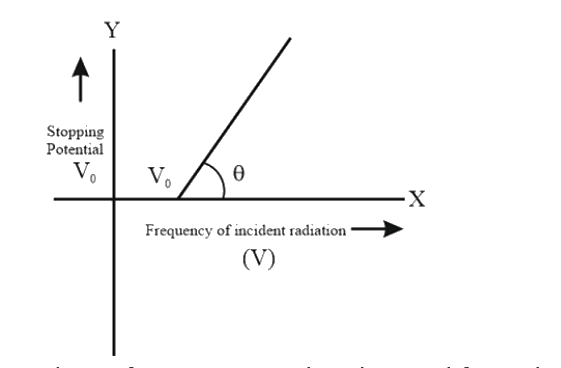State the information's obtained from the formula of a compound.
To answer the question about the information obtained from the formula of a compound, we can break down the solution into clear steps:
1. Identify the Elements Present:
- The formula of a compound indicates the types of elements that are present in it. For instance, in the compound carbon dioxide (CO₂), the formula shows that it contains two different elements: carbon (C) and oxygen (O).
Hint: Look at the symbols in the formula to determine which elements are included.
2. Determine the Number of Atoms:
- The formula also provides information about the number of atoms of each element in a molecule of the compound. In carbon dioxide (CO₂), the formula indicates that there is 1 carbon atom and 2 oxygen atoms.
Hint: Check the subscript numbers in the formula; if there is no subscript, it means there is one atom of that element.
3. Calculate the Molar Mass:
- The formula allows for the calculation of the molar mass of the compound. For carbon dioxide, you can calculate the mass by adding the atomic masses of the elements:
- Carbon has an atomic mass of 12 g/mol and oxygen has an atomic mass of 16 g/mol. Therefore, for CO₂:
- Molar mass = (1 × 12) + (2 × 16) = 12 + 32 = 44 g/mol.
Hint: Use the atomic masses from the periodic table and multiply by the number of atoms indicated in the formula.
4. Understand the Compound's Properties:
- The formula can also give insights into the chemical properties and behavior of the compound. For example, knowing that CO₂ is made up of carbon and oxygen can help predict its reactivity and interactions with other substances.
Hint: Consider how the elements in the compound typically react or behave in chemical reactions.
5. Predict the Compound's State:
- The formula can sometimes indicate the physical state of the compound (solid, liquid, or gas) under standard conditions. For example, CO₂ is a gas at room temperature.
Hint: Familiarize yourself with common states of matter for different compounds.
Summary:
From the formula of a compound, we can gather information about the types of elements present, the number of atoms of each element, the molar mass of the compound, insights into its chemical properties, and sometimes its physical state.
- The formula of a compound indicates the types of elements that are present in it. For instance, in the compound carbon dioxide (CO₂), the formula shows that it contains two different elements: carbon (C) and oxygen (O).
- The formula also provides information about the number of atoms of each element in a molecule of the compound. In carbon dioxide (CO₂), the formula indicates that there is 1 carbon atom and 2 oxygen atoms.
- The formula allows for the calculation of the molar mass of the compound. For carbon dioxide, you can calculate the mass by adding the atomic masses of the elements:
- Carbon has an atomic mass of 12 g/mol and oxygen has an atomic mass of 16 g/mol. Therefore, for CO₂:
- Molar mass = (1 × 12) + (2 × 16) = 12 + 32 = 44 g/mol.
- The formula can also give insights into the chemical properties and behavior of the compound. For example, knowing that CO₂ is made up of carbon and oxygen can help predict its reactivity and interactions with other substances.
- The formula can sometimes indicate the physical state of the compound (solid, liquid, or gas) under standard conditions. For example, CO₂ is a gas at room temperature.
From the formula of a compound, we can gather information about the types of elements present, the number of atoms of each element, the molar mass of the compound, insights into its chemical properties, and sometimes its physical state.
Topper's Solved these Questions
- ELEMENTS, COMPOUNDS, SYMBOLS AND FORMULAEBook:ICSEChapter:ELEMENTS, COMPOUNDS, SYMBOLS AND FORMULAEExercise:EXERCISE - III
Explore 4 Videos
- ELEMENTS, COMPOUNDS, SYMBOLS AND FORMULAEBook:ICSEChapter:ELEMENTS, COMPOUNDS, SYMBOLS AND FORMULAEExercise:OBJECTIVE TYPE QUESTIONS
Explore 17 Videos
- ELEMENTS, COMPOUNDS, SYMBOLS AND FORMULAEBook:ICSEChapter:ELEMENTS, COMPOUNDS, SYMBOLS AND FORMULAEExercise:OBJECTIVE TYPE QUESTIONS (MULTIPLE CHOICE QUESTIONS)
Explore 10 Videos
- ELEMENTS, COMPOUNDS AND MIXTURESBook:ICSEChapter:ELEMENTS, COMPOUNDS AND MIXTURESExercise:EXERCISES (Objective Questions) (True/False)
Explore 7 Videos
- INTRODUCTION TO CHEMISTRY Book:ICSEChapter:INTRODUCTION TO CHEMISTRY Exercise:Think and answer
Explore 2 Videos
Similar Questions
Knowledge Check
The formula of a compound represents
Aan atomBa particleCa moleculeDa combination
The graph between frequency of incident radiations and stopping potential for a given photosensitive material as follows.

What information can be obtained from the value of the intercept on the potential axis ?
View SolutionWhich type of information can be obtained from a floral diagram?
View SolutionWhat qualitative information can you obtain from the value of the equilibrium constant?
View SolutionWrite down the formulae of the following compounds

View SolutionWrite down the formulae of the following compounds

View SolutionState the equation for the preparation of following compound.
Chlorobenzene from aniline (in 2 steps).
View SolutionWhat are the rules for writing the formulae of compounds?
View Solution
